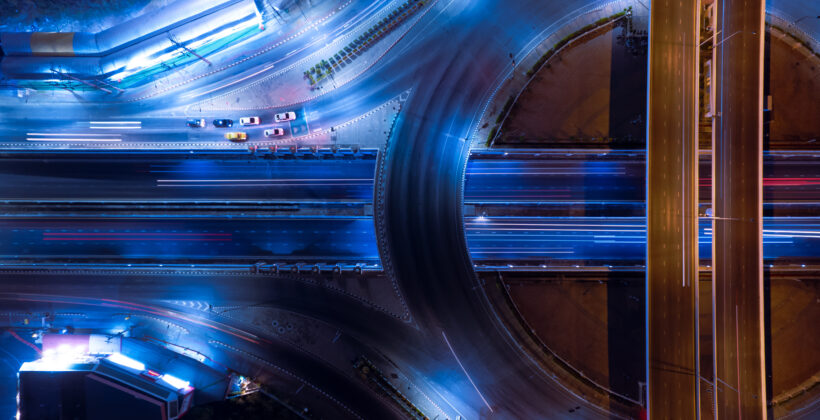Commentary
Rapid transition to beat the heatCan we respond to extreme heat to protect human health and shore up infrastructure in such a way that actually accelerates a rapid, low carbon transition to...
All the wonders of human civilisation were conceived of, and created in, a climate that no longer exists. Nowhere is this clearer than in the infrastructure that shapes our everyday lives – from transport systems to urban planning. Many of these systems are woefully under prepared for extreme heat today – let alone what’s yet to come in the years ahead.
The UK rail network, for instance, quite literally buckles under extreme heat. As temperatures soar, steel expands, warps and then buckles, essentially paralysing the rail network amid heat waves and heightening the risk of derailment. The irony of this is that it pushes more people onto the roads, driving emissions higher. UK rail lines are stress-tested for what’s considered ‘normal’ summer temperatures at around 27°C – but what’s ‘normal’ is quickly melting away.

When in direct sunlight, rail lines can be up to 20°C warmer than ambient temperatures. Painting crucial lines white can reduce heat absorbency and cut temperatures by between 5°C and 10°C. There is also scope to change the materials used to build trains, with the University of Huddersfield currently investigating the effectiveness of 3D printed carbon fibre components to reduce the overall weight of trains to make them more efficient to power and less likely to cause lines to buckle. Carbon fibre trains are already making tracks in places like China. Better monitoring technologies to measure surface temperatures in real time can also help the network manage sudden temperature spikes and reduce potential disruption.
Roads and pavements can also be made more resilient in the face of extreme heat by using lighter coloured and more reflective materials in the construction process. Research suggests that these types of streets can lower air temperatures by 1.4°C. Across the US cities, with their expansive roads and streetscapes, this could reduce the frequency of heat waves by up to 41%. The same MIT study estimated that by increasing the reflectiveness of all roads in the USA, the savings from reduction in demand for cooling in buildings would cut emissions equivalent to taking 4 million cars off the road for one year.

However, location really does matter when creating more reflective streets, as the sun’s radiation can be reflected into buildings or make pavements hotter for pedestrians if done poorly. Instead, using permeable materials to build streets could curtail heat by helping to evaporate excess moisture. Cities as diverse as Paris, Sydney and Chula Vista are all experimenting with cool pavements and have a variety of pilot projects under way.
In this series, the Rapid Transition Alliance will explore how housing, infrastructure and community resilience can be improved in the face of extreme heat and become part of the process of urgent decarbonisation and reducing energy demand, drawing on evidence-based hope from around the world.
Read moreThe cooling potential of rejuvenating streets should not detract from the urgent need to reduce car usage in cities. Making it undesirable to own a car in a large city is the first step in freeing up space for more homes and more greenspace, while also cutting pollution and emissions. While cities will struggle to recalibrate enough parking spaces and roads to build a new Hampstead Heath to battle extreme heat, smaller pockets of green public space should not be overlooked. In the Australian city of Adelaide, researchers found that small tree and grass covered spaces cut daytime temperatures by up to 6°C during extreme heat events. The greater variety of tree species and flora that can be packed into these small pockets of public space can maximise the cooling effect all year round, not just in the blistering summer heat. The species used, however, should be selected according to local conditions as context matters.
Rapid Transition Alliance member Possible are currently running a parklets campaign as part of the Car Free Cities programme. The idea behind parklets is simple: reimagining parking spaces as vibrant small parks, pushing polluting cars out of the city and giving public space back to the community. In terms of rapid transition, initiatives like this are triple-wins: they cut pollution, carbon and reclaim spaces for people and nature.
The urban skyline can also be harnessed to fight off extreme heat and keep citizens cool. Green roofs and walls are nothing new and are sprouting up all over the world. Studies suggest that green walls can be up to 32°C cooler than conventional walls and can reduce the surrounding air temperature by up to 4°C. These oases of greenery are also a boost for urban biodiversity, as the story of the previously extinct small-flowered tongue orchid appearing in the roof garden of an investment back in the heart of the City of London.
Alongside their cooling benefits, green roofs and walls can also help reduce urban air pollution in dense urban areas. And with even small general coverage, green roofs can deliver cleaner air as one study estimated that a 10%-20% increase in the total green roof area could make a substantial contribution to improving air quality in cities. Used strategically in certain parts of the city, the purifying potential of green walls can be elevated further. A study from the University of Surrey found that using green walls in ‘street canyons’, where structures or buildings flank roads which are often the most polluted parts of cities, could result in a 30%-57% reduction in air pollution.
